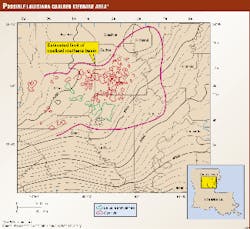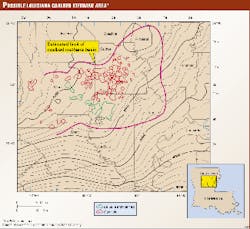Louisiana pursues coalbed methane drilling
A well could be drilled soon into what might be a large coalbed methane resource in north-central Louisiana.
Basin Research Institute at Louisiana State University, Baton Rouge, is seeking an interested party to fund the drilling of an exploratory well to about 4,000 ft to test the viability of the resource. BRI would participate as an overriding royalty owner and, if asked, a paid consultant to the operator.
A research project that started in 1994 led to a determination that gas being produced from sandstone reservoirs in central Caldwell Parish was of biogenic origin, or generated by the action of methanogenic bacteria on coal beds.
Area stratigraphy revealed that the coal beds of the Wilcox were the source beds.
The investigations, which are continuing, have enabled the location of a prospect area where the average coalbed thickness in multiple seams is a combined 154 ft/well over at least 6,000 acres, said John B. Echols, principal investigator.
The area of interest has been densely drilled since the 1920s for oil and gas in conventional sandstone reservoirs, not coalbed methane from the gas sourcing coal beds themselves. Therefore, a large amount of well control is available for stratigraphic, structural, and isopach mapping to determine the area`s geological framework and history.
The map below shows the estimated outline of the basin and outlines of the conventional oil and gas fields.
The area of interest lies between the Monroe uplift on the northeast, the D`Arbonne platform on the north-northwest, and the Sabine platform on the west (OGJ, Mar. 16, 1998, p. 96).
BRI has scheduled a one-day conference about coalbed methane in Louisiana on Sept. 1 on the LSU campus in Baton Rouge.

